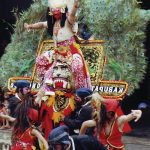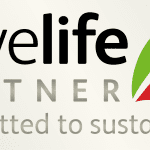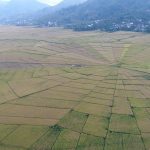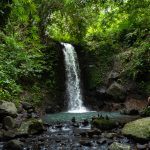Wicked Adventures has a unique chance to display Flores and Sumbawa’s rich cultural heritage as we visit many of the sites where traditional textiles are manufactured. These islands are home to a wide range of traditional handwoven textiles, each with its own distinctive design and method.
The Importance of Traditional Textiles
Textiles are more than just clothing for the people of Flores and Sumbawa; they are an expression of their history, values, and ethnic identity. Each village’s handwoven cloths have their own distinct style and skills. These fabrics are utilized at significant cultural events such as weddings, births, and funerals. They are also passed down through generations as heirlooms. Some of the special meanings linked with traditional textiles are as follows:
– Social standing and financial riches
– Fertility and protection rituals
– Coming-of-age rituals
– Ancestral connections
Flores Textile Styles and Techniques
Flores and Sumbawa have numerous major textile styles. One of the most well-known is ikat, a weaving technique in which the threads are tie-dyed before weaving to produce the designs. When weaving, it needs significant ability and accuracy to line up the patterns correctly. The following are some popular ikat styles from the islands:
– Endek – a Flores style with earthy tones and geometric motifs.
– Lunggi – a Sumbawa style with strong, vivid motifs.
Another popular method is songket, which involves weaving metallic threads into fabric to create shimmering motifs. Patterns are formed by additional threads woven into the fabric in this technique. It is common in Flores’ indigenous Lio fabrics. We encounter songket in the Manggarai cultures around Ruteng, Wae Rebo and Ecocamp. Flores and Sumbawa batik frequently combines symbolic motifs like as animals, vegetation, and geometric forms.
Regional Styles
Textile styles differ between Flores and Sumbawa villages and ethnic groupings. Here are a few examples:
– Kodi is well-known for its earthy red, black, and white fabrics.
– Ngada – Styles with snakes and diamonds.
– Ende – Blue and purple textiles with designs of sea creatures.
– Bima – Well-known for its beautiful purple songket fabrics.
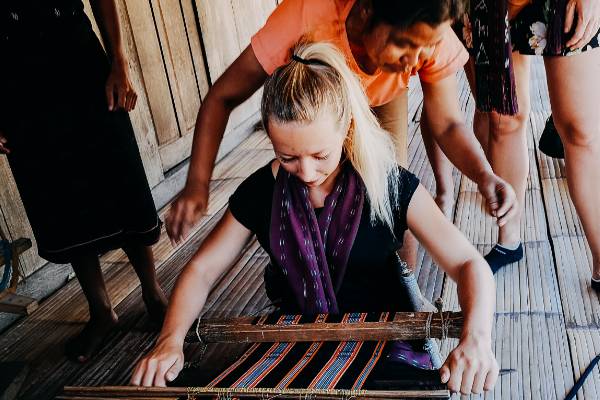
Weaving Process
There are various time-consuming stages involved in creating these elaborate textiles:
1. Gathering raw materials such as locally grown cotton and dyes derived from roots, leaves, and fruits.
2. Using a hand spindle, spin cotton into threads.
3. Tie-dying threads for ikat patterns.
4. Putting up the bamboo or wood handloom.
5. Hand-weaving the threads in specific designs.
6. The textile is washed and finished.
For a single textile, the complete procedure can take 1-2 months! Weaving skills are passed down from moms to daughters, preserving the history. Please note, due to time, loss of traditional knowledge and the ease of purchasing materials, many modern weavers use synthetic materials. While many visitors wish for “pure” techniques and materials, these textiles are rarely created for consumption outside the communities. These are, in fact, truly authtentic and in common usage
Flores Textiles – Cultural Significance
Textiles are utilized in a variety of cultural ceremonies, including:
– Providing textiles as a dowry in marriages.
– Giving newborn newborns textiles.
– Using traditional textiles to wrap the deceased.
– Exchanging textiles to cement clan relationships.
They are also significant markers of identity. Textile styles, motifs, and colors might reveal which village or tribe the wearer belongs to.
Where to Experience Textile Traditions
Our tours visit many of the sites where traditional textiles are created, where we can witness, but also participate in the creation of textiles. We try to support local artisans throughout our trips. Some of the best venues to see weaving culture include:
– Kelimutu National Park – See ikat weaving demonstrations.
– Ruteng – Learn traditional weaving skills by visiting weaving collectives.
– Bajawa – Visit local markets that sell handwoven textiles.
– Sumbawa Besar – Visit textile factories and showrooms.
Here at Wicked Adventures we are supporting the next generation of weavers through training programs and community development efforts. By investing in the talents and expertise of young weavers, we hope to help preserve Flores and Sumbawa’s cultural history for future generations.
Flores & Sumbawa’s traditional textiles’ elaborate designs and brilliant colors are a monument to the talent of local artists and a celebration of longstanding cultural traditions. We hope our guests gain a better understanding of Indonesia’s cultural richness and diversity by exploring the textile heritage of these islands and supporting local people. Stops at local weaving collectives, even learning opportunities are parts of all our Flores Adventures
